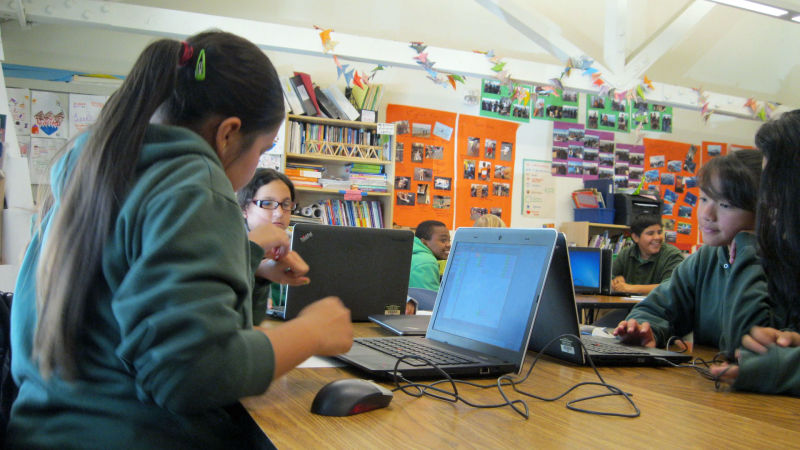Sixth-grade students at Lighthouse Community Charter in Oakland, California, eagerly pull laptops off a cart and settle down with a partner to experiment with Turtle Art, a program meant to introduce them to the basics of programming and some math concepts.
Math teacher Laura Kretschmar gave students a rubric with specific goals around collaboration, communication and instructions to use various functions in the program, but not a lot else. She’s intentionally giving them a lot of freedom to play with the program, create cool designs and figure out what the functions do.
“I think “y” means, like, going up,” says Juritzy Maldonado. “So to pull it up, I’m going to try to change the number.” She punches in 200 for “y” and watches the image she’s creating shift upward. Another group discovers that if they hit “repeat” multiple times, they can create a parachute-like design that they’ve figured out how to color in various ways. That wasn’t their original plan, but they’re running with it now.
“Pretty much everything we were doing is trying one-by-one and seeing what we got, and then we put them all together,” said Guadalupe Pena. She and her partner realize they haven’t used a crucial function to set "xy" but they’re not worried. “We still don’t know how to use [it] very well,” Guadalupe admits. “Since we’ve already got everything written down, we can take the risk to make it to see what it does to our parachute.”
This blind exploration using Turtle Art is part of a two-week deep dive Kretschmar is doing on the coordinate grid. She says it can be a tricky concept for a lot of kids, and it's more fun for them to uncover the intricacies using Turtle Art. Having the context of their experience with the program makes the math concepts more relevant when the time comes to teach them. She also likes that while kids are exploring they’re working together, helping each other and building a visual reference point.

The Turtle Art project, and the concept of “doing” or “making” before any explicit instruction has been given, is part of the school’s attempt to shake up its teaching. Lighthouse Community Charter has to cover the same standard curriculum as district schools, so teachers have to choose carefully the times when they’ll spend a little more time and creativity on a difficult subject.




